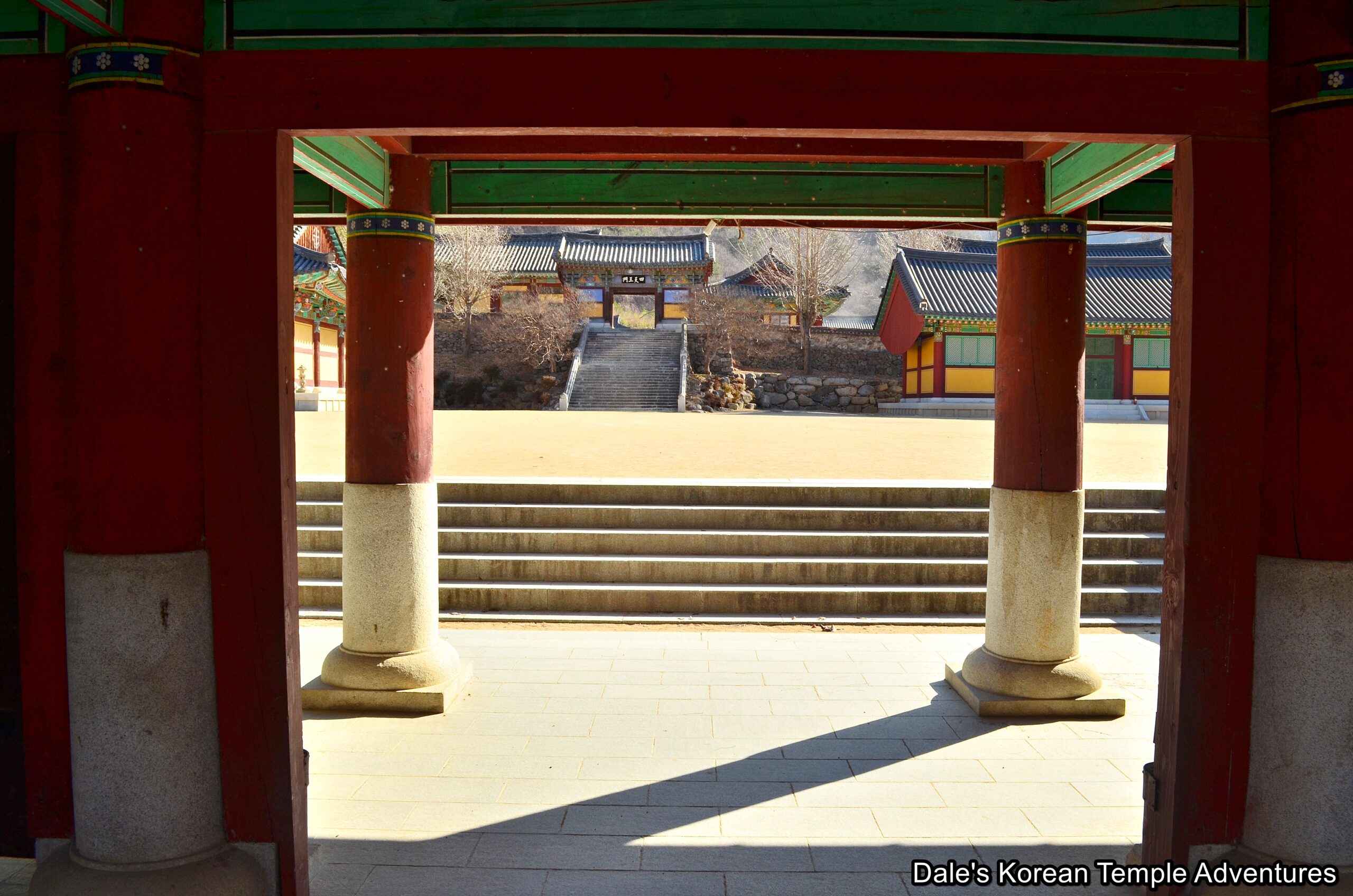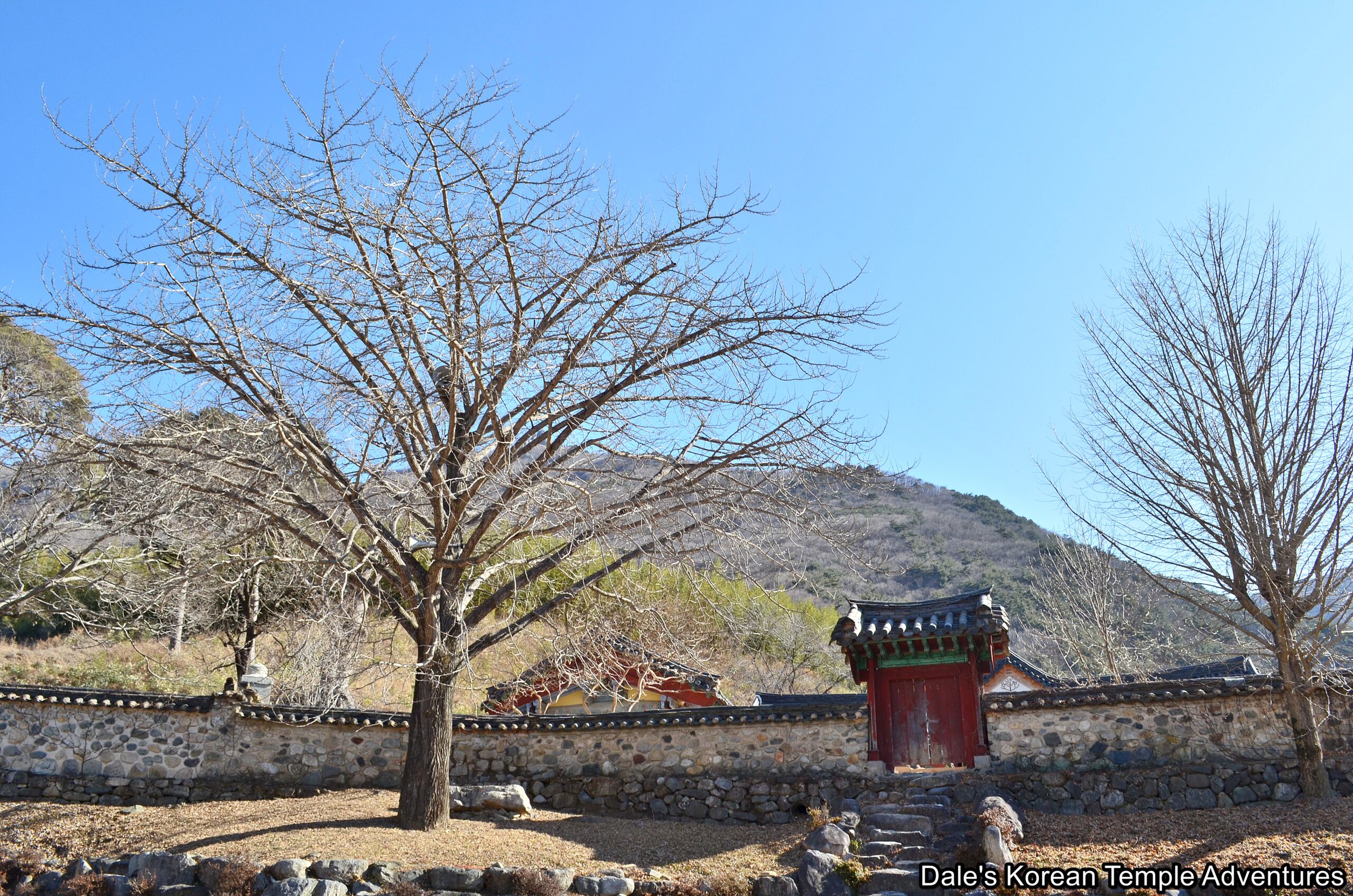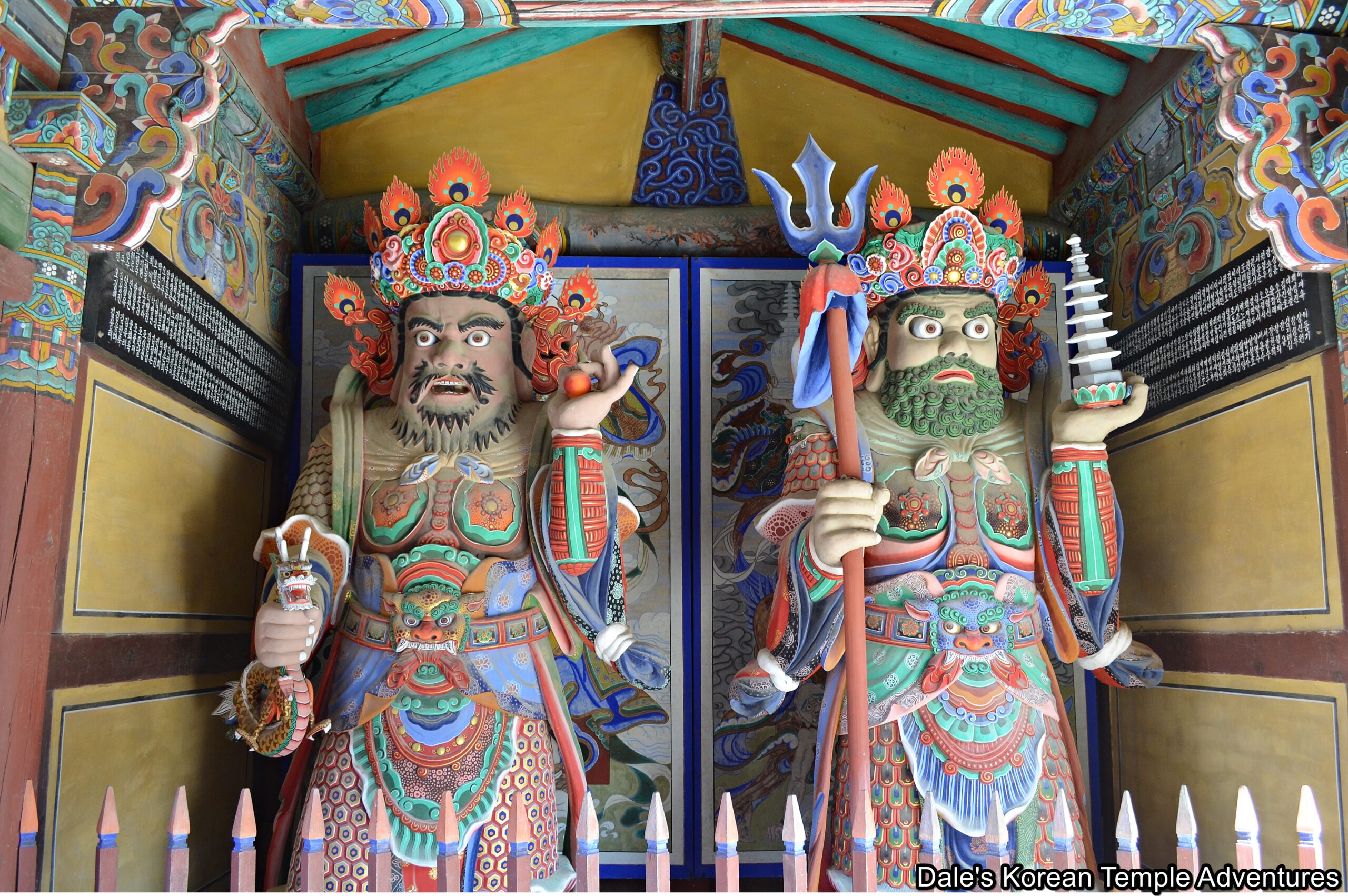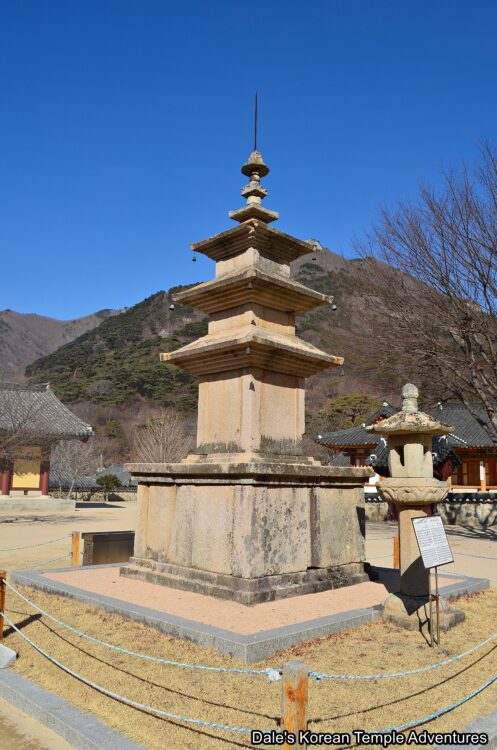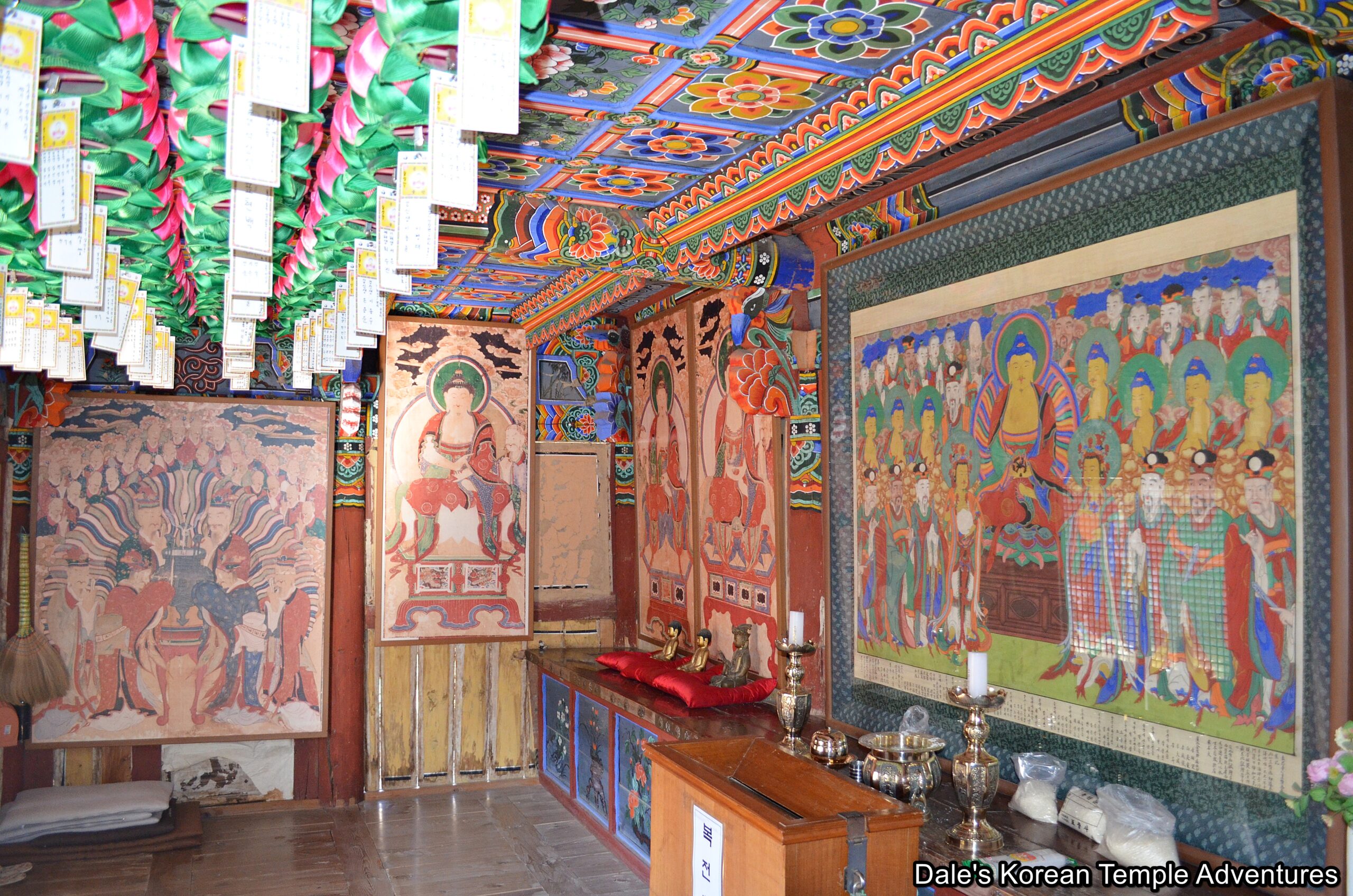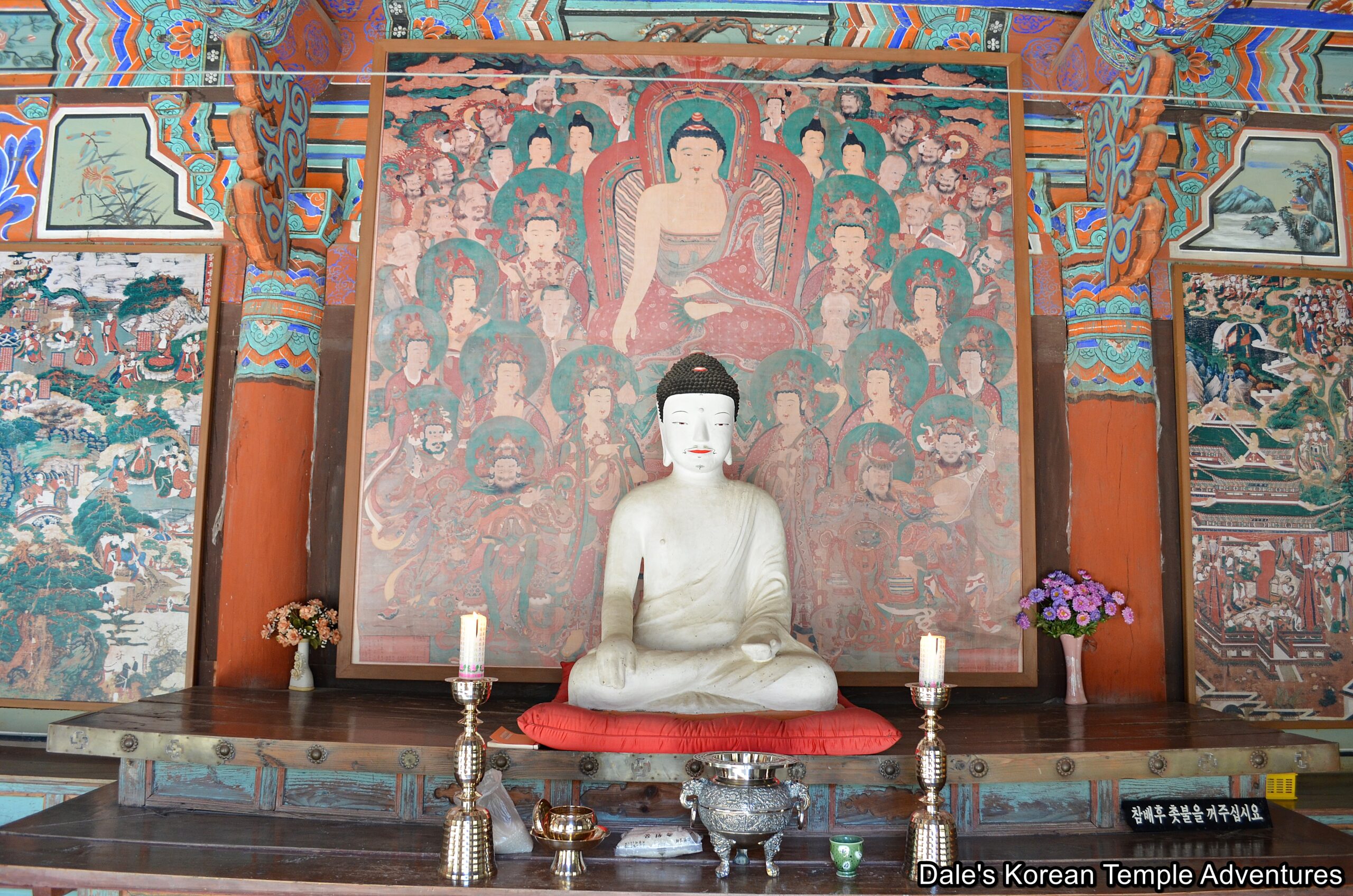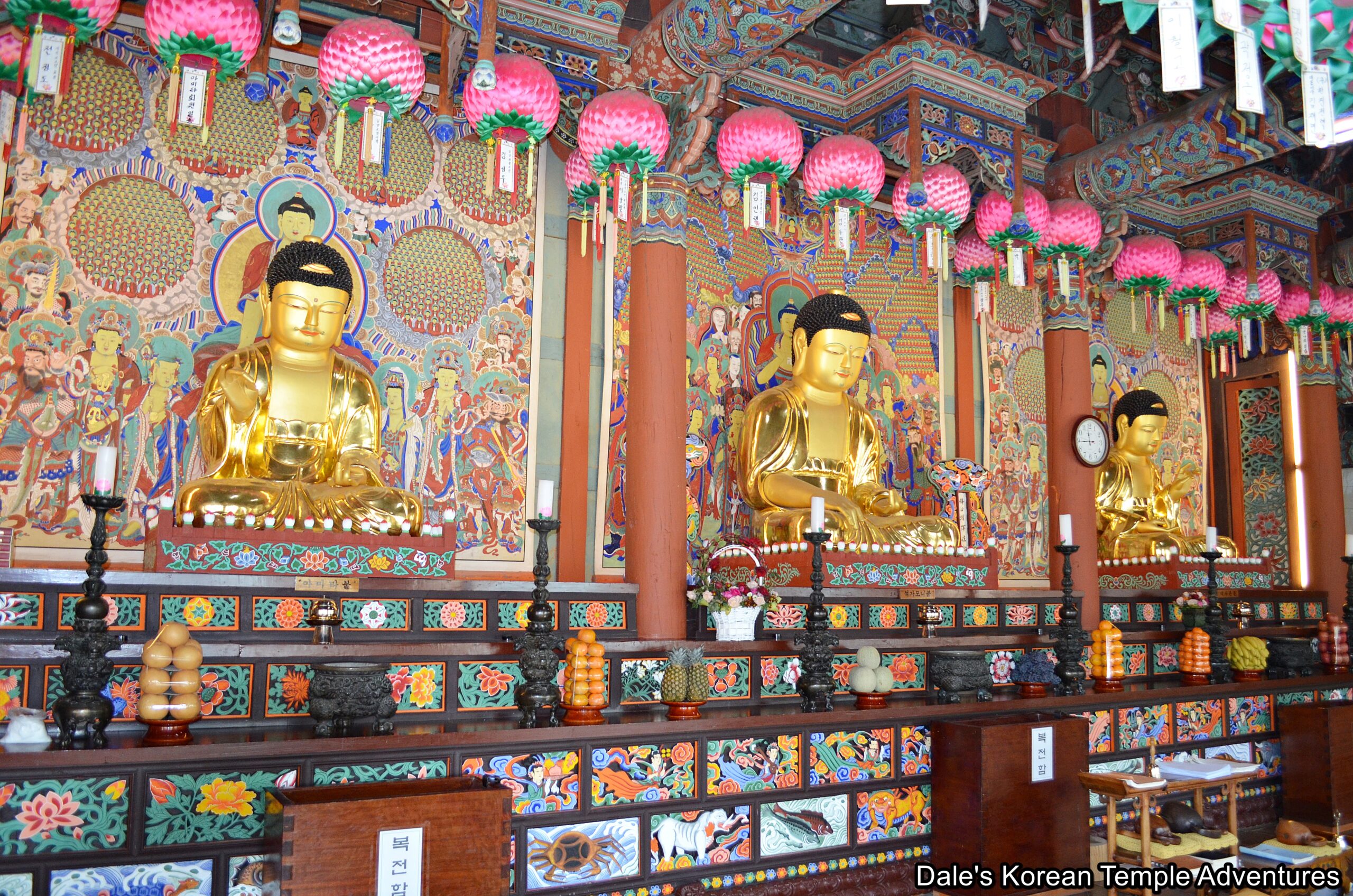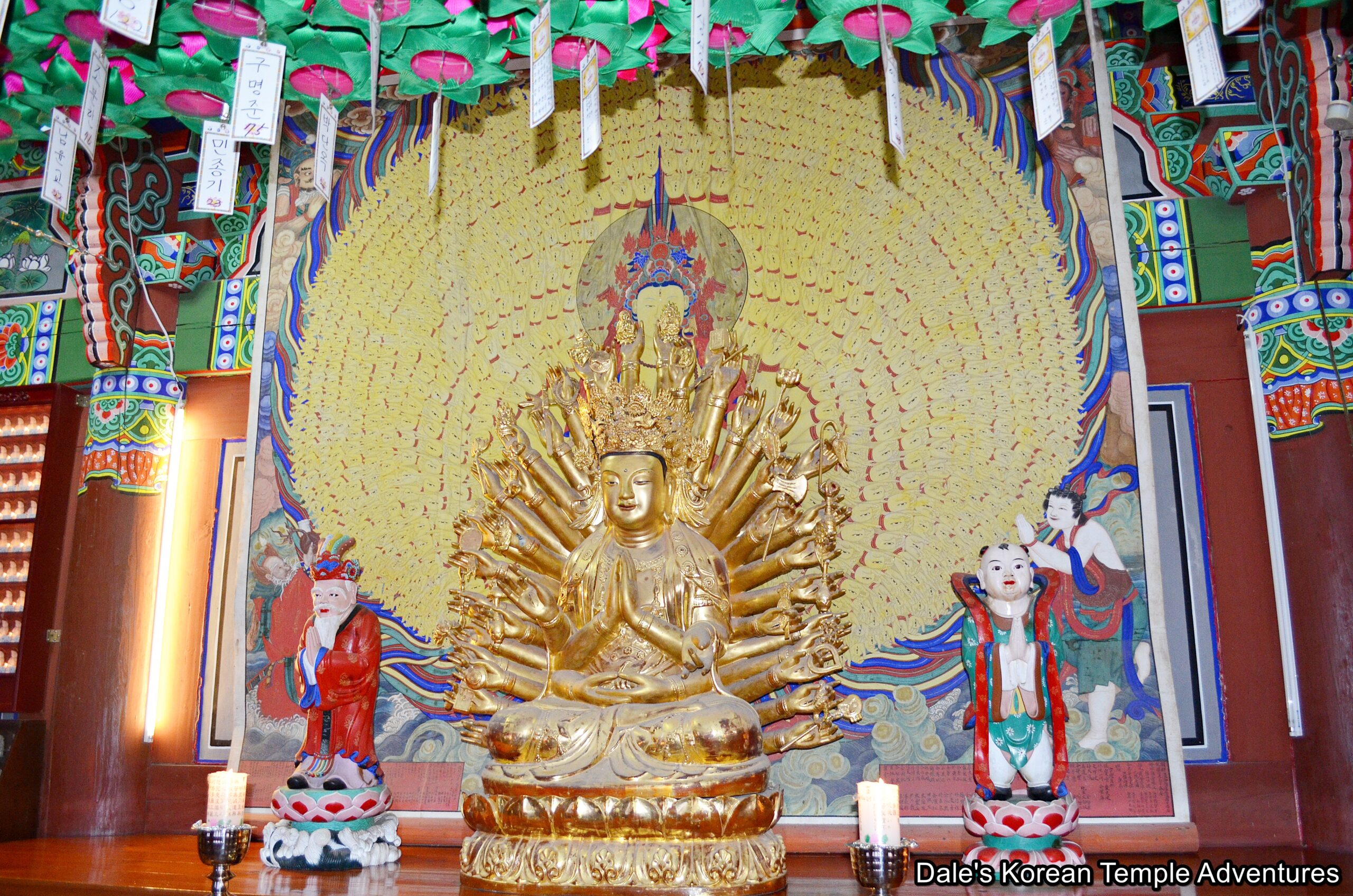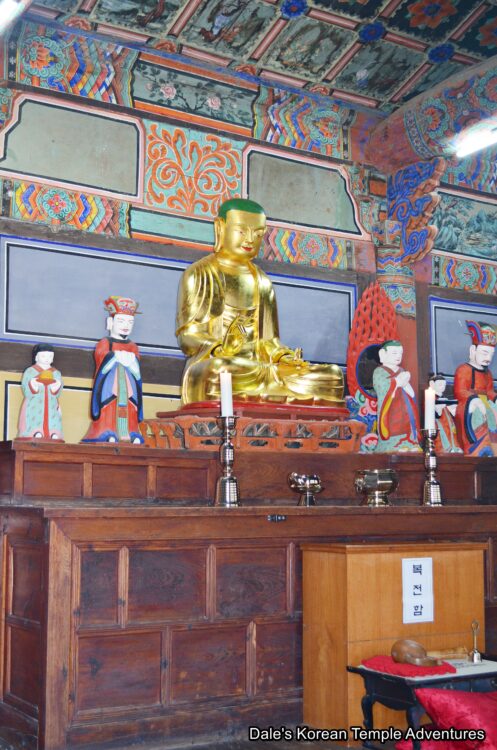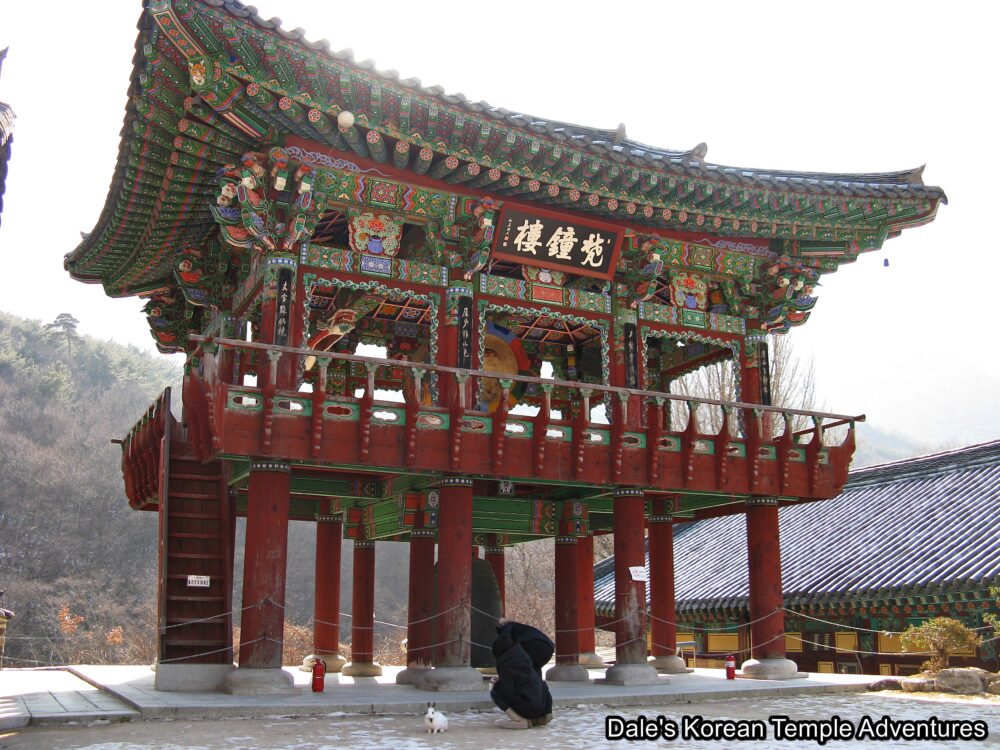Pyochungsa Temple – 표충사 (Miryang, Gyeongsangnam-do)
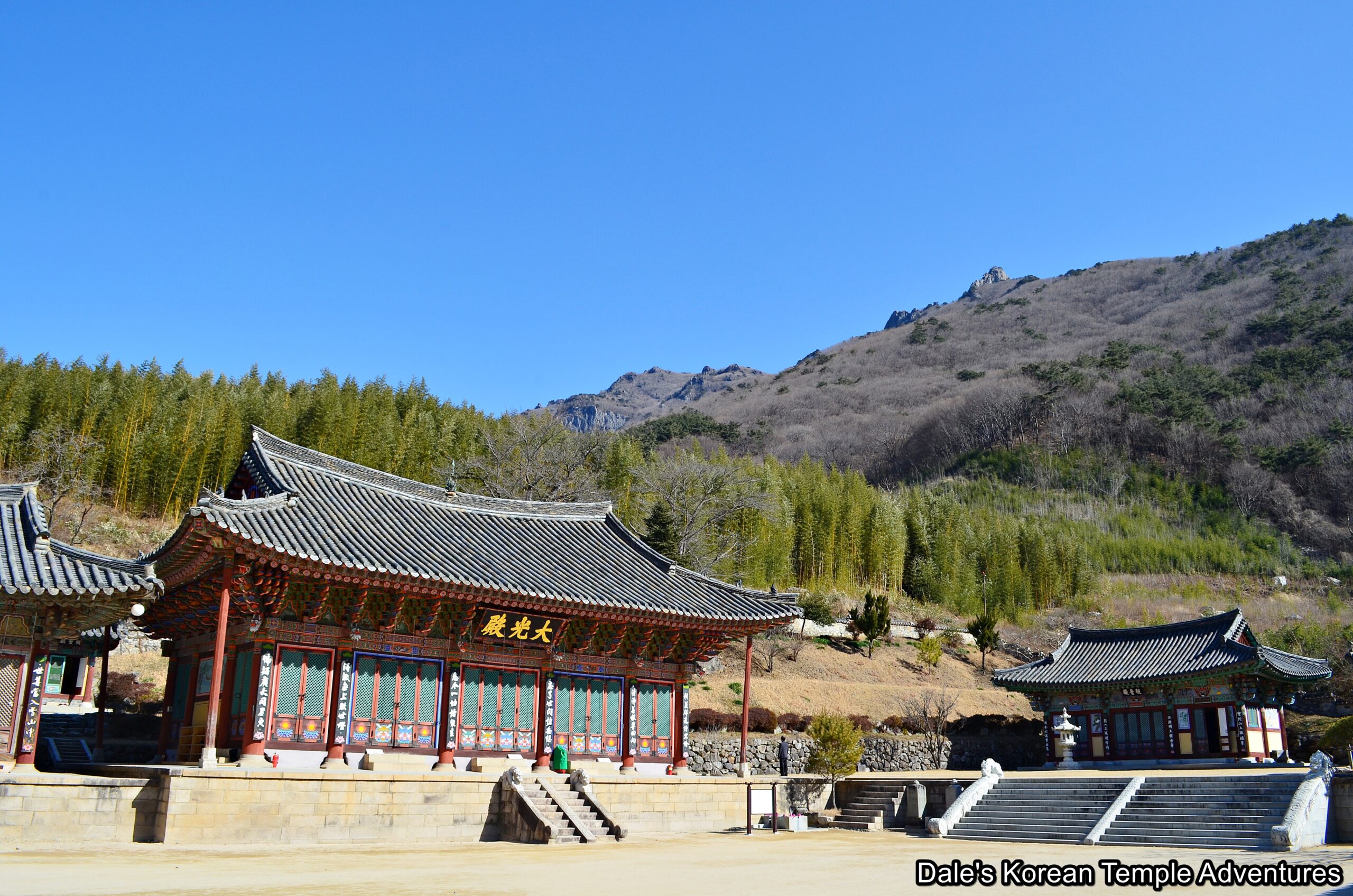
Temple History
Pyochungsa Temple, which is located in eastern Miryang, Gyeongsangnam-do, beneath the watchful eye of Mt. Jaeyaksan (1119.1m). The name of the temple means “Display Loyalty (Devotion or Fidelity) Temple,” in English. And Pyochungsa Temple was first established in 654 A.D. by the famed monk Wonhyo-daesa (617 – 686 A.D.). The temple was established after Wonhyo-daesa was meditating at a nearby temple. Looking up, he saw a group of auspicious clouds glowing iridescently above a bamboo forest. Immediately, Wonhyo-daesa built a meditation hut, uphill, where Geumgangam Hermitage now stands. Initially, the temple was called Jungnimsa Temple, which means “Bamboo Forest Temple,” in English.
Later, in 826 A.D., the temple was expanded by the traveling monk Hwangmyeon-seonsa. Hwangmyeong-seonsa enshrined a sari (crystallized remain) of the Buddha inside a three-story stone pagoda. Then in 829 A.D., the temple was renamed Yeongjeongsa Temple by King Heungdeok of Silla. The new name of the temple, Yeongjeongsa Temple means “Eternal Well Temple,” in English. It was named Yeongjeongsa Temple after the third son of King Heungdeok of Silla (r.826-836) was cured of his leprosy. After Hwangmyeon-seonsa ritually blessed the yaksu, or “medicinal mineral water,” in English, the third son of King Heungdeok of Silla both drank and washed in this water. It was only then that the prince was healed. During the Goryeo Dynasty (918-1392), the famed monk Ilyeon-guksa (1206-1289) gathered more than a thousand monks at the temple in 1284 to give a lecture.
And the final temple name change occurred with the assuming of its current name: Pyochungsa Temple. During the Imjin War (1592-1598), seven hundred Buddhist warrior monks, known as the Righteous Army, fought against the invading Japanese under the monks Samyeong-daesa (1544-1610), Seosan-daesa (1520-1604), and Giheo-dang (?-1592). The temple was destroyed by fire at the beginning of the war because it was one of the main bases that Samyeong-daesa trained and led his warrior monks from. Over the years, it was slowly rebuilt. Specifically, the temple was renamed Pyochungsa Temple to honour Samyeong-daesa whose birthplace was Miryang.
In 1839, a Confucian academy was moved to Pyochungsa Temple by the monk Wolpa-seonsa. Enshrined inside the Confucian academy, which was renamed Pyochung-seowon Academy, were murals of Samyeong-daesa, Seonsan-daesa, and the monk leader Giheo-dang hung. The signboard that hangs above the entry to this shrine hall was granted by King Heonjong (r.1834-1849) to show praise for the loyalty that the warrior monks displayed during the Imjin War. More recently, Master Hyobong (1888-1966) who became the first Supreme Patriarch of the Unified Jogye Order in 1962, passed away at Pyochungsa Temple in 1966.
In total, Pyochungsa Temple is home to one National Treasure and one Korean Treasure. It’s also home to the popular Temple Stay program in Korea.
Temple Layout
As you make your way towards Pyochungsa Temple, you’ll be joined by the Sijeon-cheon River. Past Daewonam Hermitage to your right, the temple finally reveals itself through the trees. You pass under the Suchung-ru Pavilion to finally gain admittance to the temple grounds at Pyochungsa Temple. In this lower courtyard, you’ll find the Garam-gak shrine, which houses a tablet to ward off evil spirits from entering Pyochungsa Temple. Still to the left, you’ll notice the amazing museum at Pyochungsa Temple. If you have the time, definitely visit it because not only does it house artifacts pertaining to Samyeong-daesa, but it also houses National Treasure #75, the Bronze Incense Burner with Silver-inlaid Design of Pyochungsa Temple. This beautiful incense burner was first made in 1177. An inscription at the base indicates that the incense burner was actually made for Yongheungsa Temple in Changnyeong, Gyeongsangnam-do. How this historic artifact ended up at Pyochungsa Temple is unclear.
A little further along, and up a flight of stone stairs, you’ll pass through the Cheonwangmun Gate. Housed inside this gate are four of the more expressive Heavenly Kings that you’ll find in Korea. And equally expressive are the demons they are trampling underfoot. Having passed through this entry gate, you’ll enter into the middle courtyard at Pyochungsa Temple. In this part of the temple courtyard, you’ll find the Manil-ru Pavilion; and behind this pavilion, you’ll find the Chilseong-gak Hall. Housed inside this shaman shrine hall is an older image of Chilseong (The Seven Stars). Interestingly, you’ll find seven distinct murals dedicated to Chilseong inside the Chilseong-gak Hall. Also in this middle courtyard, you’ll find the Three-Story Stone Pagoda of Pyochungsa Temple. This pagoda dates back to Later Silla (668-935 A.D.), and it’s Korean Treasure #467. The pagoda stands 7.7 metres in height. The base of the pagoda is rather large, and the finial has been well preserved considering its age and history.
Up yet another set of stairs, and now standing squarely in the upper temple courtyard, you’ll find quite a few shrine halls populating this part of Pyochungsa Temple. The first of these shrine halls stands to your left. This shrine hall is the Palsang-jeon Hall, which houses a white statue of Seokgamoni-bul (The Historical Buddha) on the main altar. It’s joined by the Palsang-do (Eight Scenes from the Buddha’s Life Murals). Unfortunately, these paintings are just replicas of the originals. However, with that being said, you can still appreciate just how amazing the originals must look like.
Next to the Palsang-jeon Hall is the Eungjin-jeon Hall. Inside this hall you’ll find sixteen white statues of the Nahan (The Historical Disciples of the Buddha). To the rear of the Palsang-jeon Hall and the Eungjin-jeon Hall, you’ll find the Sanshin/Dokseong-gak Hall. This shaman shrine hall, which is both elevated and compact in design, houses two rather simplistic murals dedicated to Sanshin (The Mountain Spirit) and Dokseong (The Lonely Saint).
To the right of this triad of temple shrine halls, you’ll find the Daeung-jeon Hall. This hall is beautifully painted both inside and out with fierce Gwimyeon (Monster Mask) adorning the base of the front doors. Resting on the main altar are a triad of statues centred by Seokgamoni-bul. This statue is joined on either side by Yaksayeorae-bul (The Medicine Buddha, and the Buddha of the Eastern Paradise) and Amita-bul (The Buddha of the Western Paradise). These three statues are meant to symbolize the Buddhist idea of Samsara. Also of note inside the Daeung-jeon Hall is the sumidan, or “altar” in English. This highly elaborate altar is packed with symbolic meaning like the rabbit riding the turtle on his way to meet Yongwang (The Dragon King). And hanging on the far left wall is the Shinjung Taenghwa (Guardian Mural).
The two remaining shrine halls that visitors can explore at Pyochungsa Temple are the Gwaneum-jeon Hall and the Myeongbu-jeon Hall. The Gwaneum-jeon Hall is situated to the left, and it’s framing the towering mountains to its rear. The Gwaneum-jeon Hall’s exterior walls are adorned with masterful Shimu-do (Ox-Herding Murals). As for inside the Gwaneum-jeon Hall, you’ll find a multi-armed and headed statue dedicated to Gwanseeum-bosal (The Bodhisattva of Compassion). This golden statue of Gwanseeum-bosal is backed by an elaborate mural of herself. And joining the Bodhisattva of Compassion on the main altar is Yongwang. And joining the Gwaneum-jeon Hall in this part of the temple is the Myeongbu-jeon Hall. Housed inside the Judgment Hall is a green haired statue of Jijang-bosal (The Bodhisattva of the Afterlife). Uniquely, Jijang-bosal is larger than the ten accompanying statues dedicated to the Shiwang (The Ten Kings of the Underworld).
As a bit of a side note, there’s an interesting little tale associated with Pyochungsa Temple. There was a rabbit that once took up residence on the temple grounds. Supposedly, this rabbit was a Bodhisattva. People actually called this rabbit To-bosal, which means “Rabbit Bodhisattva,” in English. Because the rabbit never left, it was believed by some that the rabbit was a monk in its former life. It’s not clear if this rabbit is still alive or not; but if it is, it’s not unusual to see visitors, or even monks, bowing to the rabbit.
How To Get There
From the Miryang Intercity Bus Terminal, you can take a bus directly to Pyochungsa Temple. This bus first leaves the terminal at 7:35 a.m. And the last departs at 8:20 p.m. Throughout the day, the bus runs twelves times a day.
Overall Rating: 8.5/10
Pyochungsa Temple is beautifully situated upon the Yeongnam Alps. There are numerous shrine halls that visitors can explore at Pyochungsa Temple. A couple of the buildings to keep an eye out for is the Cheonwangmun Gate and the beautiful Daeung-jeon Hall. You can also enjoy the Bronze Incense Burner, which just so happens to be a National Treasure, as well as the three-story stone pagoda that’s a Korean Treasure. And if you’re really lucky, you’ll be able to see To-bosal (The Rabbit Bodhisattva).
